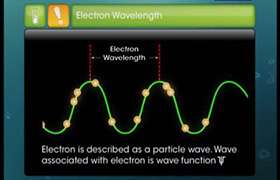CBSE Class 11-science Answered
Boundary surface diagrams are used to represent the shape of an orbital in 2-D, since orbitals are exists in 3-D, and it is difficult to represent a 3-D image in 2-D.
The shape of an orbital is defined as surface of constant probability density which encloses some large fraction (say 90%) of probability of finding electron.
For each value of ‘n’, there is one s-orbital which has spherical shape. As ‘n’ increases, there are (n-1) concentric spherical shells like the successive layers on onion.
Dumbbell shape of p orbital can be explained as follows:
The smallest possible principle number for any p orbital is 2 (if n=1, then there is only a 1s orbital). If n=2 there are three p orbitals called 2px, 2py, and 2pz. The subscript indicates the axis along which the p orbital lies. The three p orbitals are identical in size, shape and energy, and they differ only in there orientation. Boundary surface diagrams indicate that the shape of the p orbitals is that of two lobes on opposite sides of the nucleus. This gives the p orbitals a ‘dumbbell’ shape. As in the case of s orbitals, p orbitals increase in size with increasing values of n.




